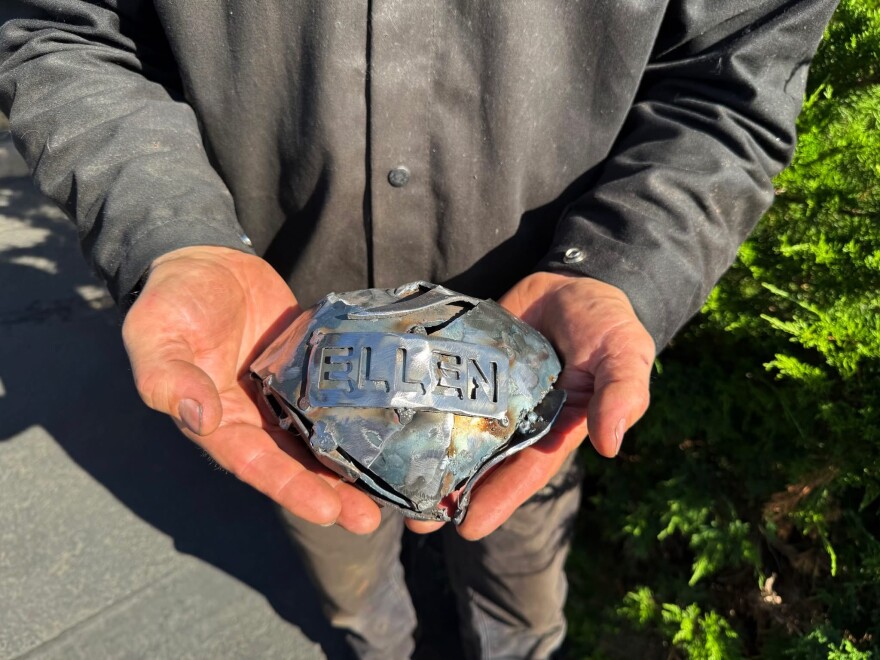This Saturday is the second-ever Warehouse District Art Hop in Eugene, a free “bike crawl” through west side galleries and studios. And a very special piece of art will be on temporary display before heading to its permanent home in Washington. As a native of Wenatchee myself, I'm especially thrilled about this project.

Eugene sculptor Jud Turner was commissioned to create a monumental public art piece, honoring P’Squosa Chief John Harmelt, also known as Crow Song. At nearly 20 feet tall and weighing over two tons, Turner’s finished “P’Squosa Monument to Chief John Harmelt atop Quilmiakin” is his most ambitious commission yet, as it symbolizes a group’s cultural history—a much deeper meaning than his fun dinosaur sculptures.

Turner, who works with found objects, wanted the work to represent Wenatchee and put out a public call for old farm equipment. A Wenatchee resident donated what are believed to be the real horseshoes of Harmelt's horse, Quilmiakin. These are now integrated into the sculpture, framing the horse’s eyes.

The P’Squosa Tribal Council provided specific instructions for the sculpture. Turner included animals from their folklore, like a coyote made from pistol hammers and adding-machine parts, a nod to colonizing technologies. With few reference pictures of Harmelt, Turner used a slow, precise process with a hand torch, taking care to form the chief's face with dignity. A late personal detail came when Turner learned Harmelt's other name, Crow Song, so he added a singing crow on the sculpture's back. His wife, fellow artist Renee Mahni, added a sculpted metal heart with Harmelt’s wife’s name, Ellen, that is out of sight, inside the chief’s chest where it belongs.

You can view the sculpture this Saturday, September 6, at The Oblivion Gallery, starting at noon, as part of the Art Hop.
Installation is Sept. 17, and there will be a public dedication ceremony on Oct 13, 2025 (Native People's Day).





